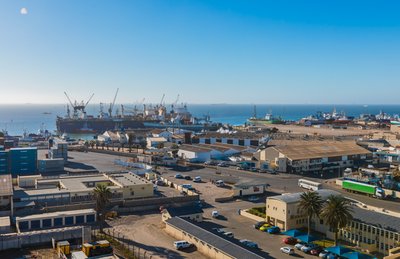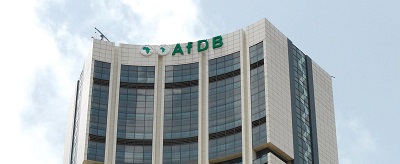
Namport’s new container terminal now more that 85% complete

Construction on the new container terminal at the Port of Walvis Bay is more than 85% complete, according to project financiers, the African Development Bank Group.
The construction of the new container terminal is due for completion in June 2019 and more than 85% of work has been complete on the expansion works, with ancillary activities to follow, the bank said in a statement on their website.
Supported by a loan from the African Development Bank in 2013 of US$300 million, or 87.6 % of the costs, the Port of Walvis Bay’s new modern container terminal is expected to increase the container handling capacity from the current 355,000 twenty-foot equivalent units (TEUs) to up to 1,005,000 TEUs.
The port will directly benefit the people, governments and private sector in Namibia, as well as the SADC region – particularly Angola, Botswana, the Democratic Republic of the Congo, South Africa, Zambia, and Zimbabwe.
Stakeholders and project beneficiaries, including the trade and logistics industry, national, regional and international consumers and exporters, are hopeful and optimistic about future economic prospects.
According to Caylin Luhzane Wimaar, a clearing and forwarding practitioner at the port, “The port expansion will create more job opportunities for everyone here. We will have to put in a lot more work, which presents a good opportunity for others to study into this field and benefit from increased job opportunities.”
Forty-nine year-old George Doeseb has been a crane operator at the port for 10 years. Born in Walvis Bay, a coastal Namibian town, he has always wanted to work there. He has seen the port at its most crowded and is excited about the capacity expansion work, which will mean better jobs and increased income, enabling him to pay his two children’s school fees and improve his family’s life in general.
“The ongoing work makes me very happy because I will learn new technologies and then save money. I can become a senior operator and my income will increase remarkably,” Doeseb said.
Additional capacity will lower the transport costs of goods purchased in Namibia and neighboring countries, representing some 14% of the total cost compared to an international standard of only 5%.
Philip Coetzee, General Manager at Woker Freight Service, one of the oldest logistics companies in the Southern Africa region, said, “I think the expansion is very positive news for the industry and for us as a business. It promises increases in business volumes, cargo flows, and additional commodities coming through. So, it is definitely a positive outcome.”
The African Development Bank will also finance the purchase of up-to-date port equipment and training for pilots and operators at the new terminal. The project financing also includes a grant to finance the Logistics and Capacity Building component. The component activities include the preparation of the National Logistics Master Plan study, technical support and capacity-building for the Walvis Bay Corridor Group, and training freight forwarders with a particular emphasis on female staff. Fifty one people have been trained and graduated in April 2018, 24 of whom are female. This has spurred discussions on similar training.
In funding this project, the bank aligns with the Namibian Government’s ambition to increase the capacity and efficiency of the Walvis Bay Port to respond to the growing freight demand in the region.
Elzevir Gelderbloem, – Executive – Port Authority and Engineering at the Namibian Ports Authority, explained, “Without the African Development Bank, we would not have the funding to build the project, and so we consider the bank to be a very important partner.
The new port of Walvis Bay Container Terminal project will significantly boost the bank’s work in regional integration and improving the lives of Africans. “Poverty alleviation in the SADC region will improve, thanks to better port efficiency and larger volumes of cargo from more trade, which will create better opportunities for trade, jobs creation and capacity development. This will lead to inclusive growth and economic transformation,” the bank stated.










































